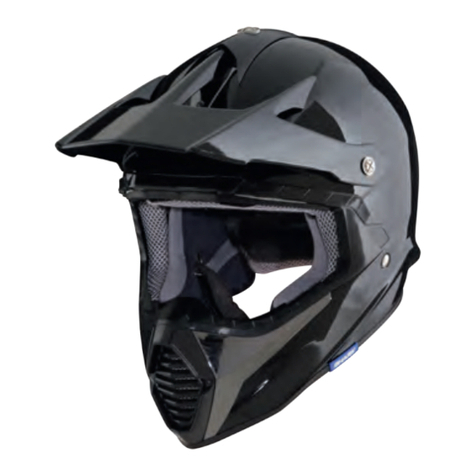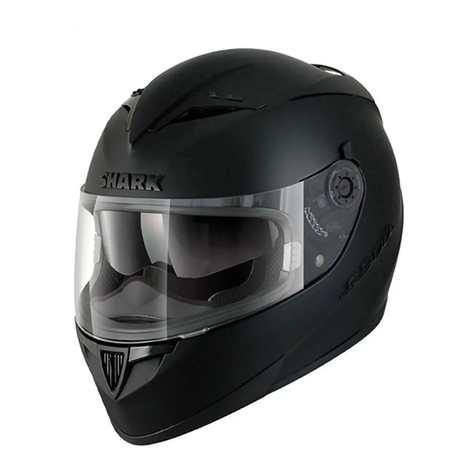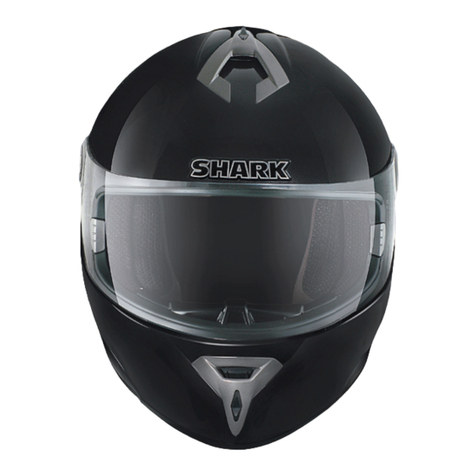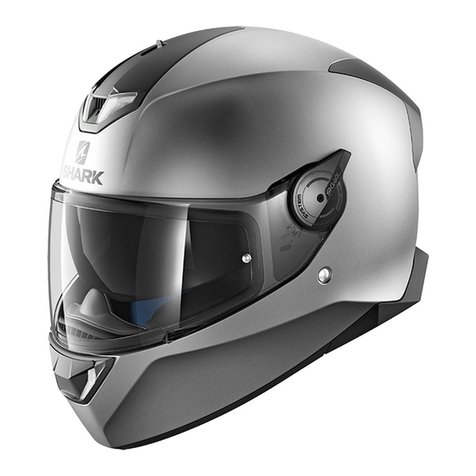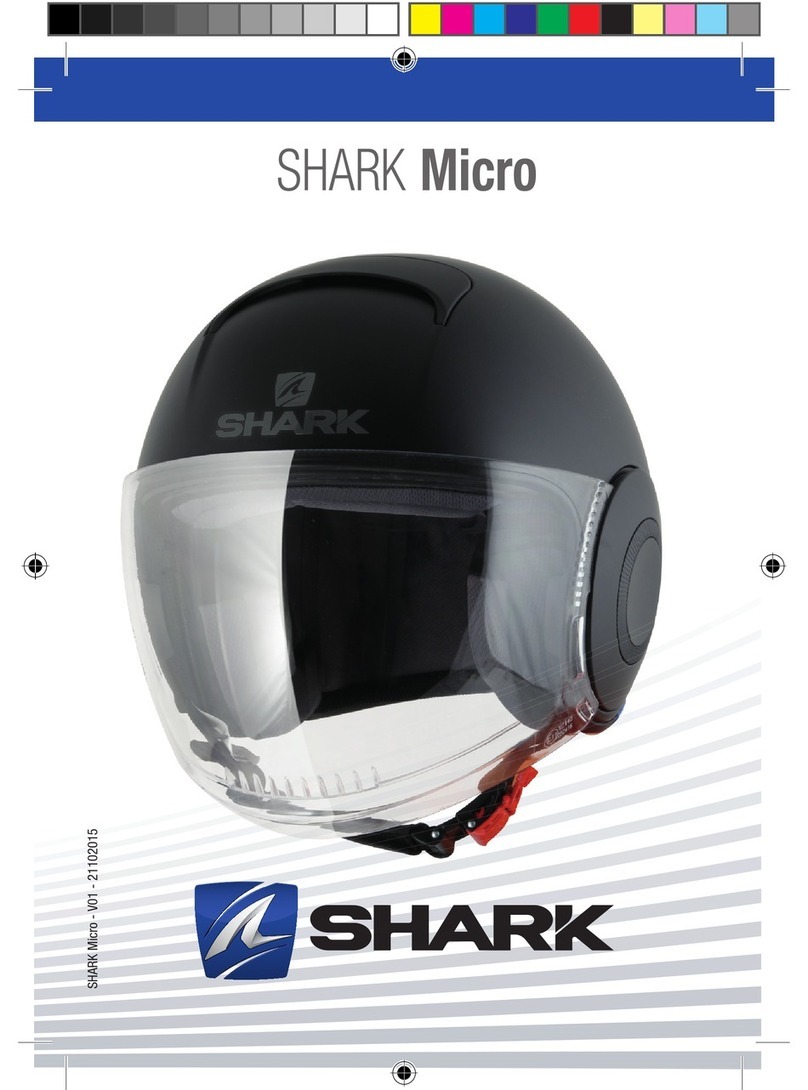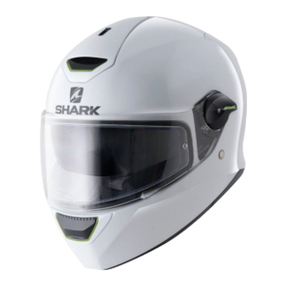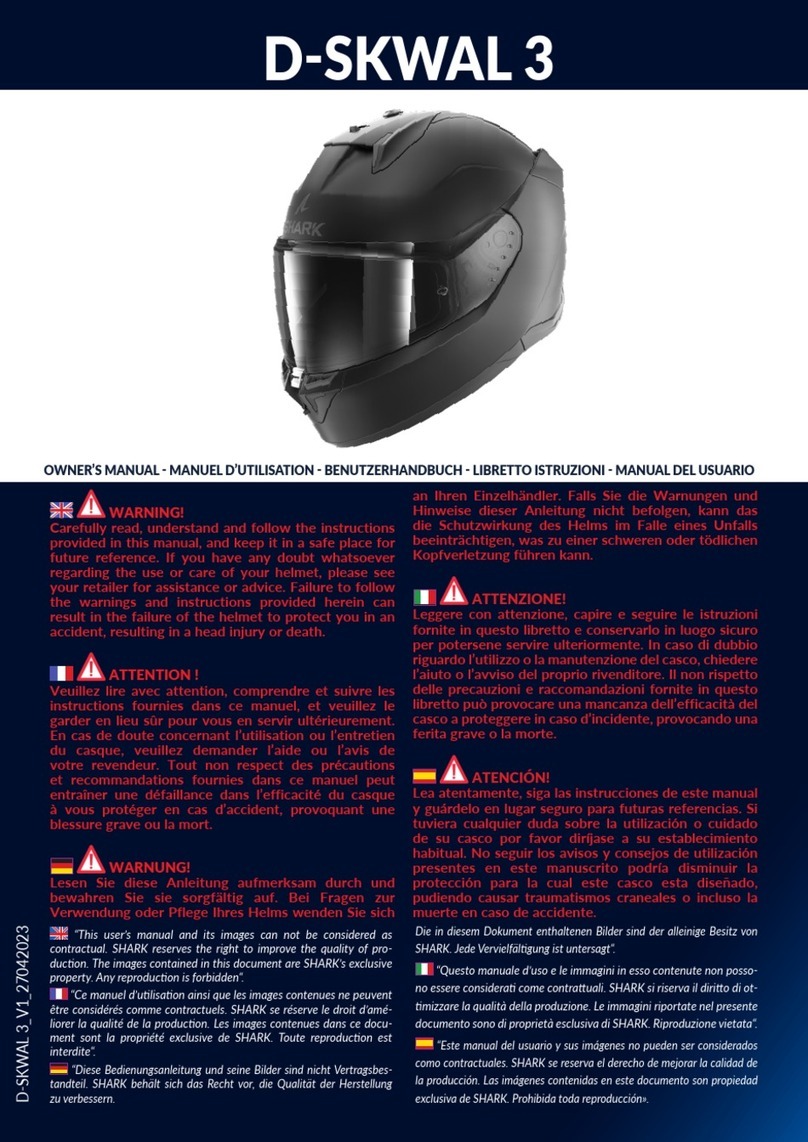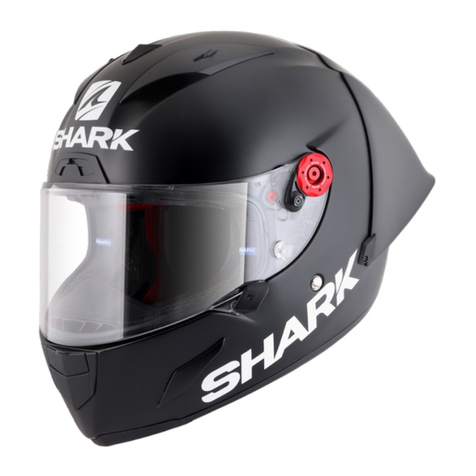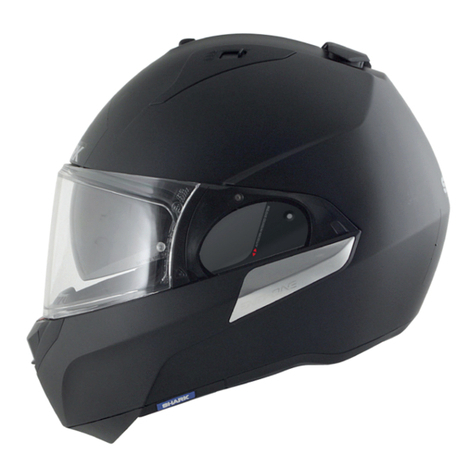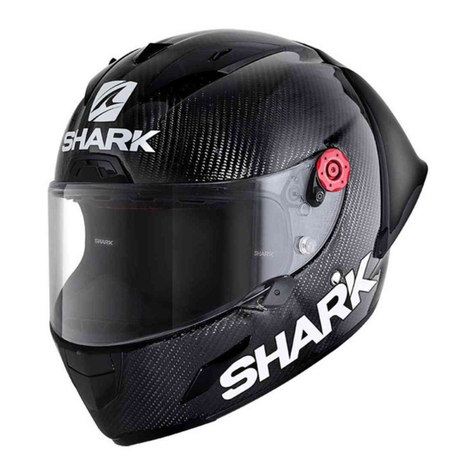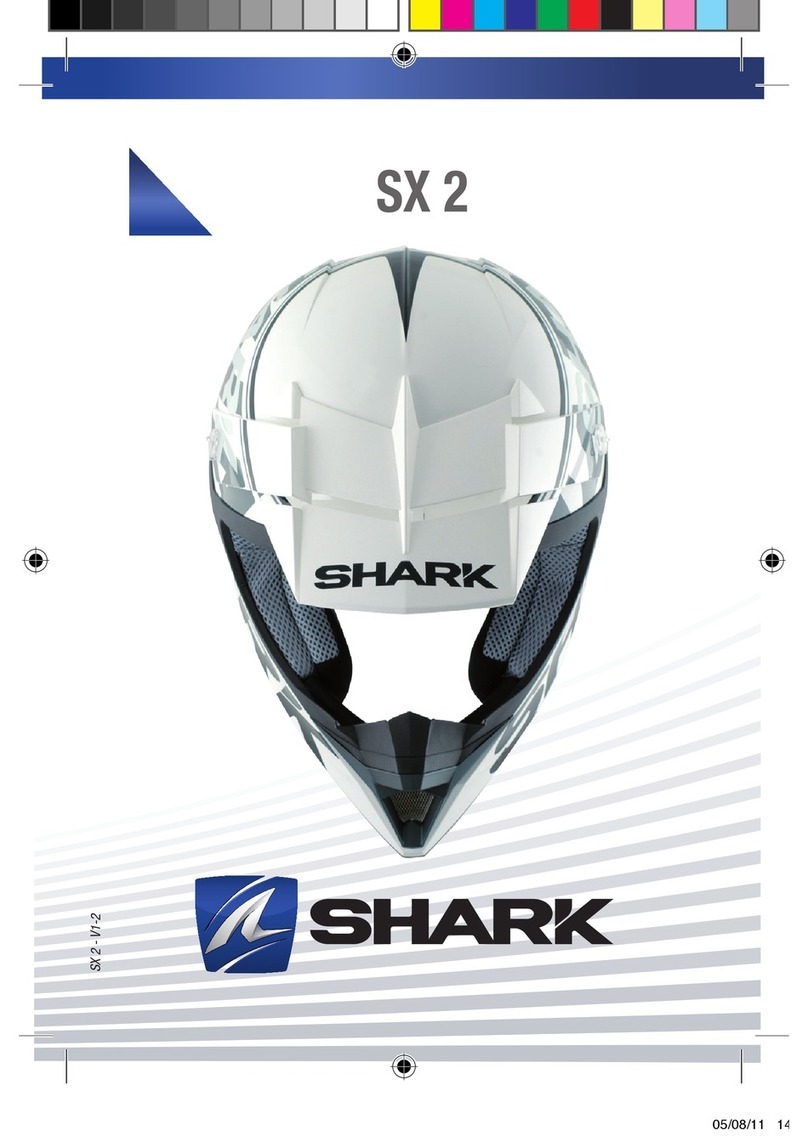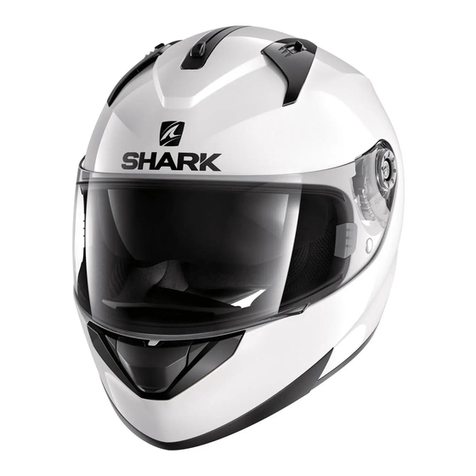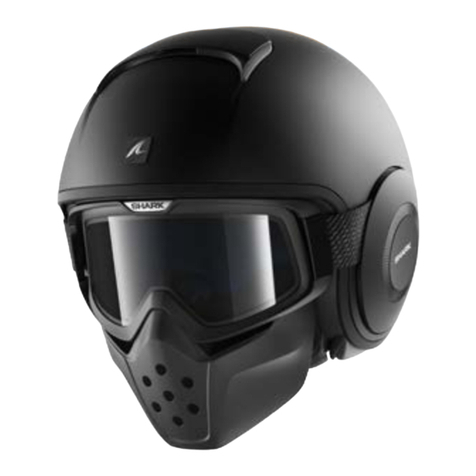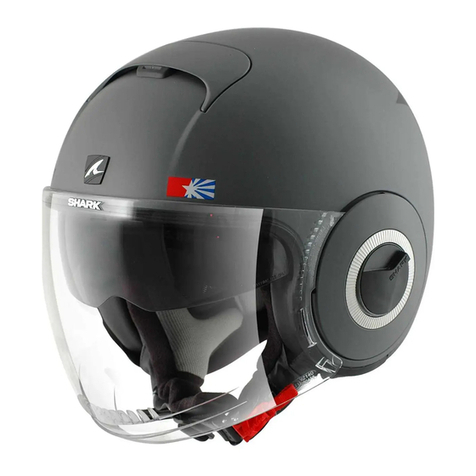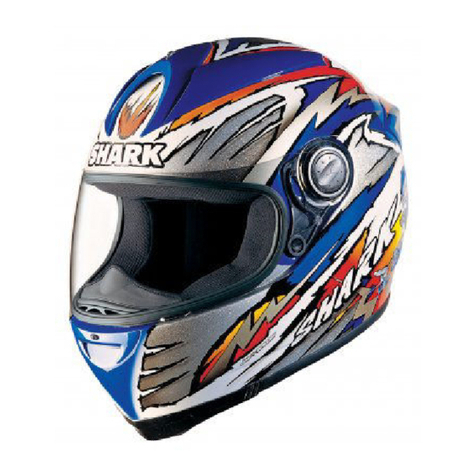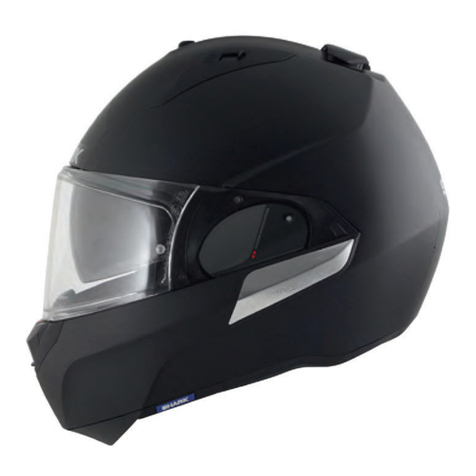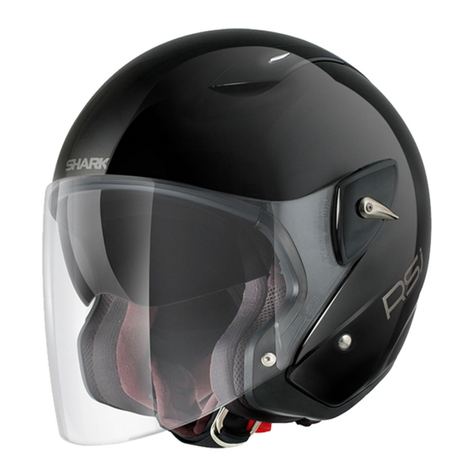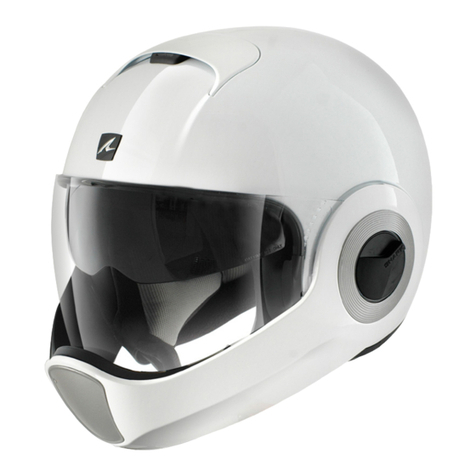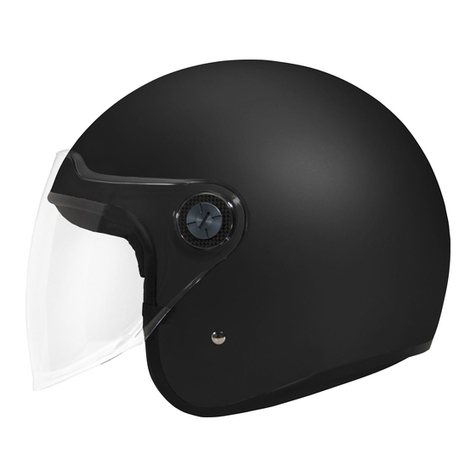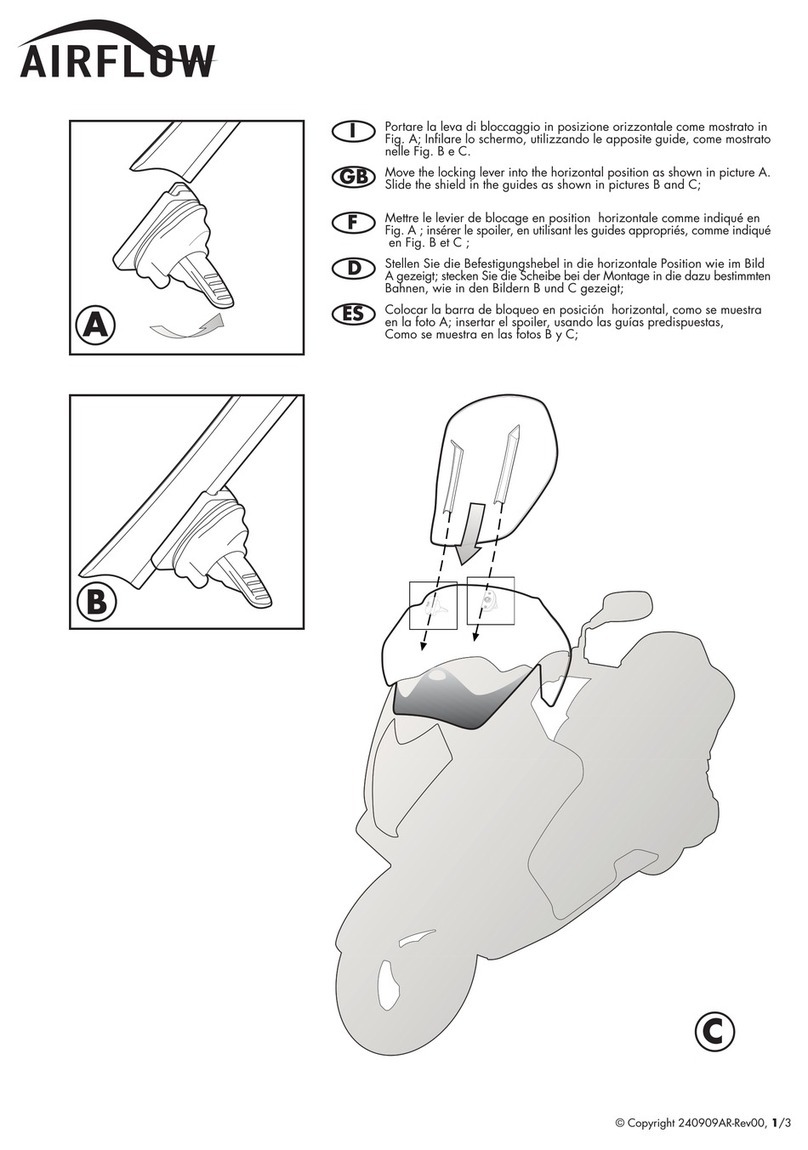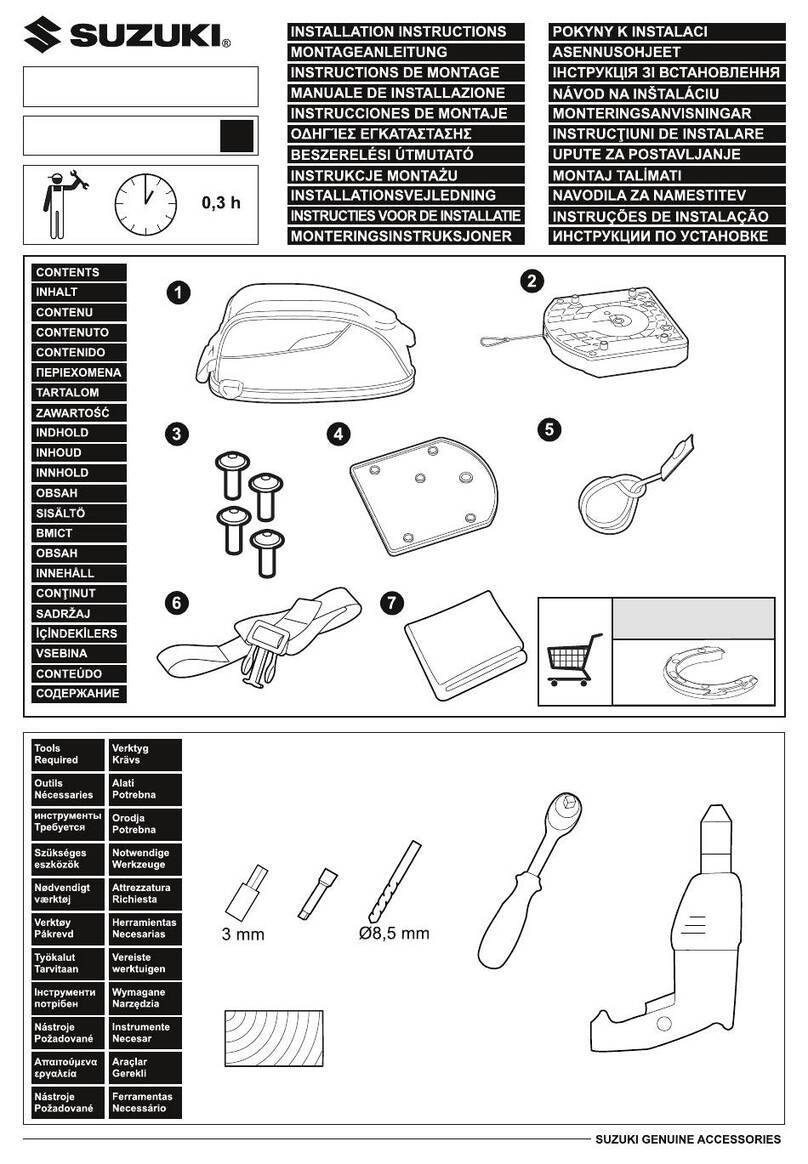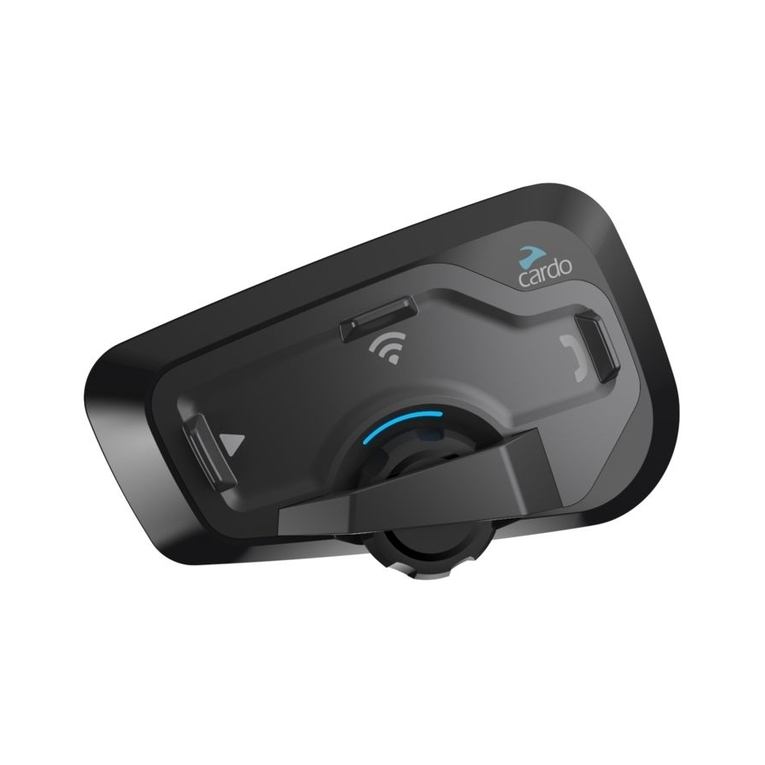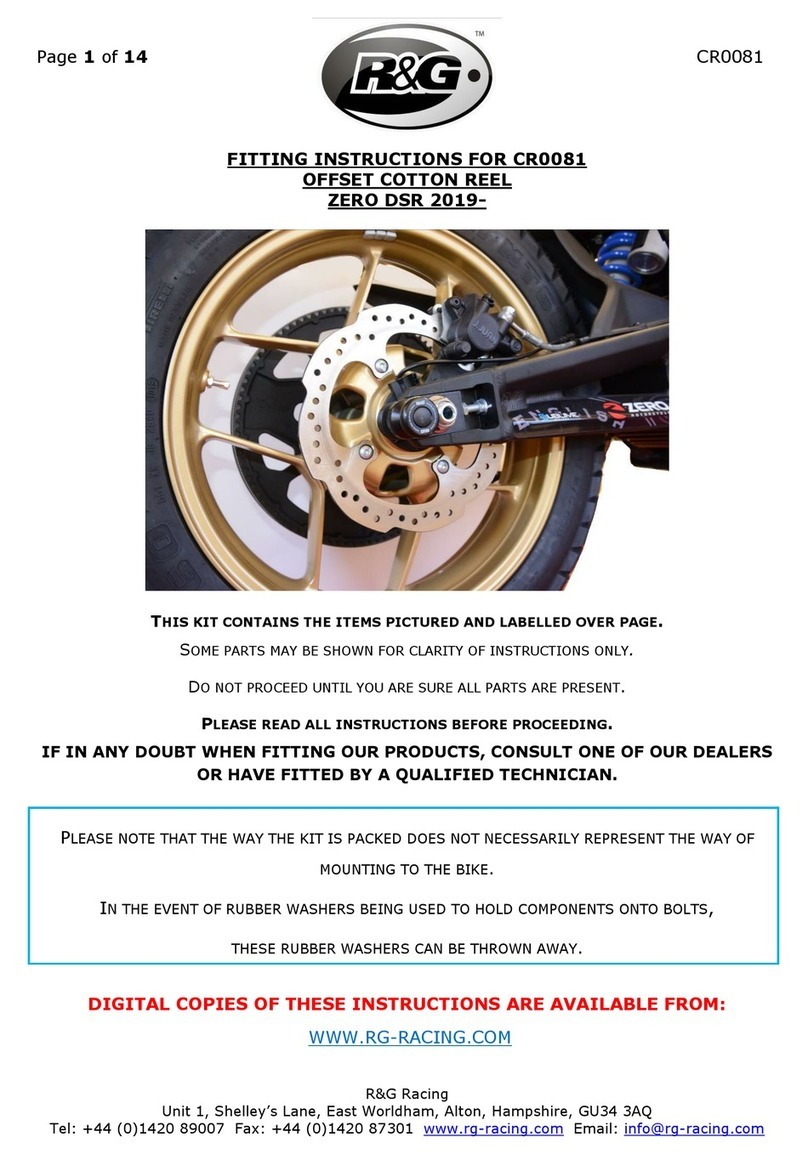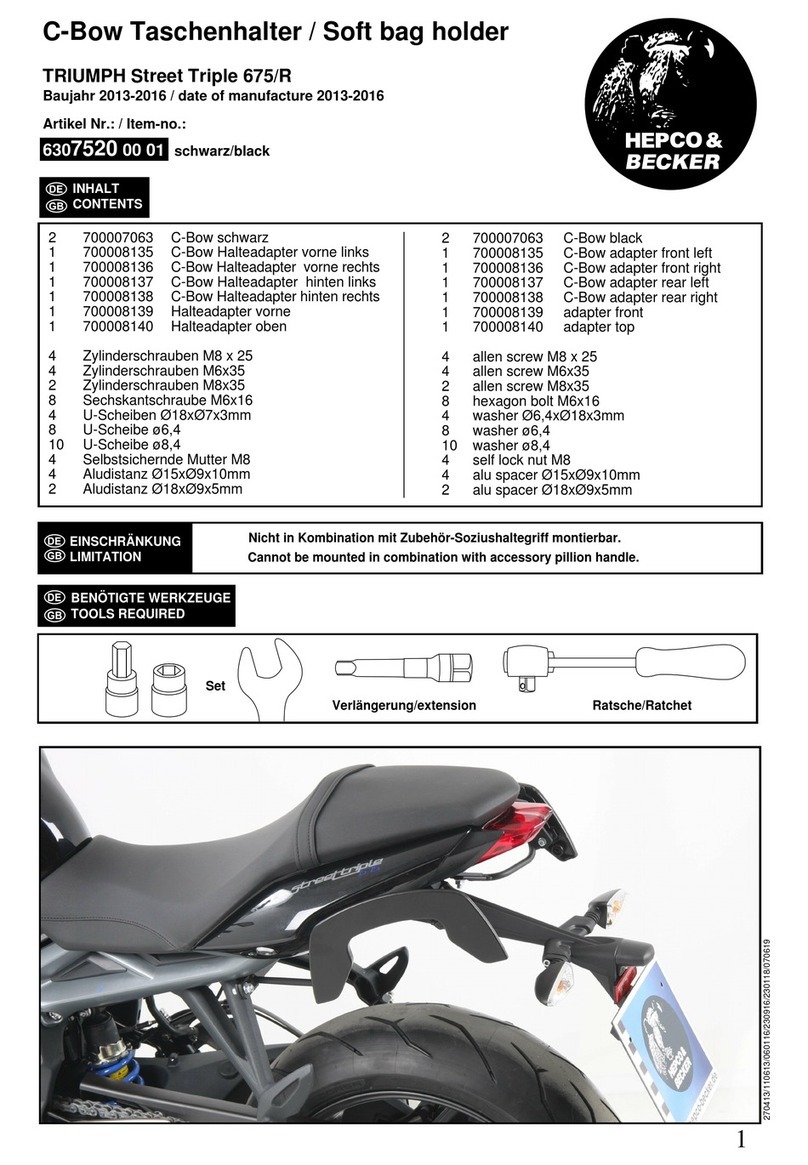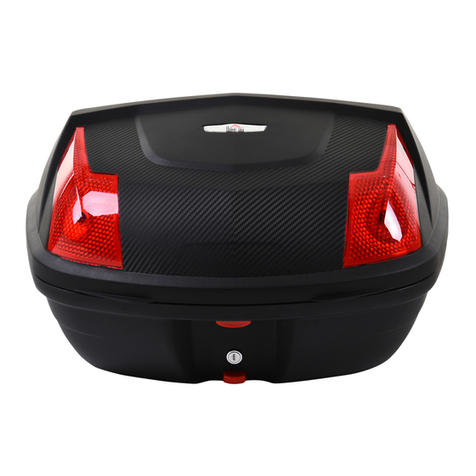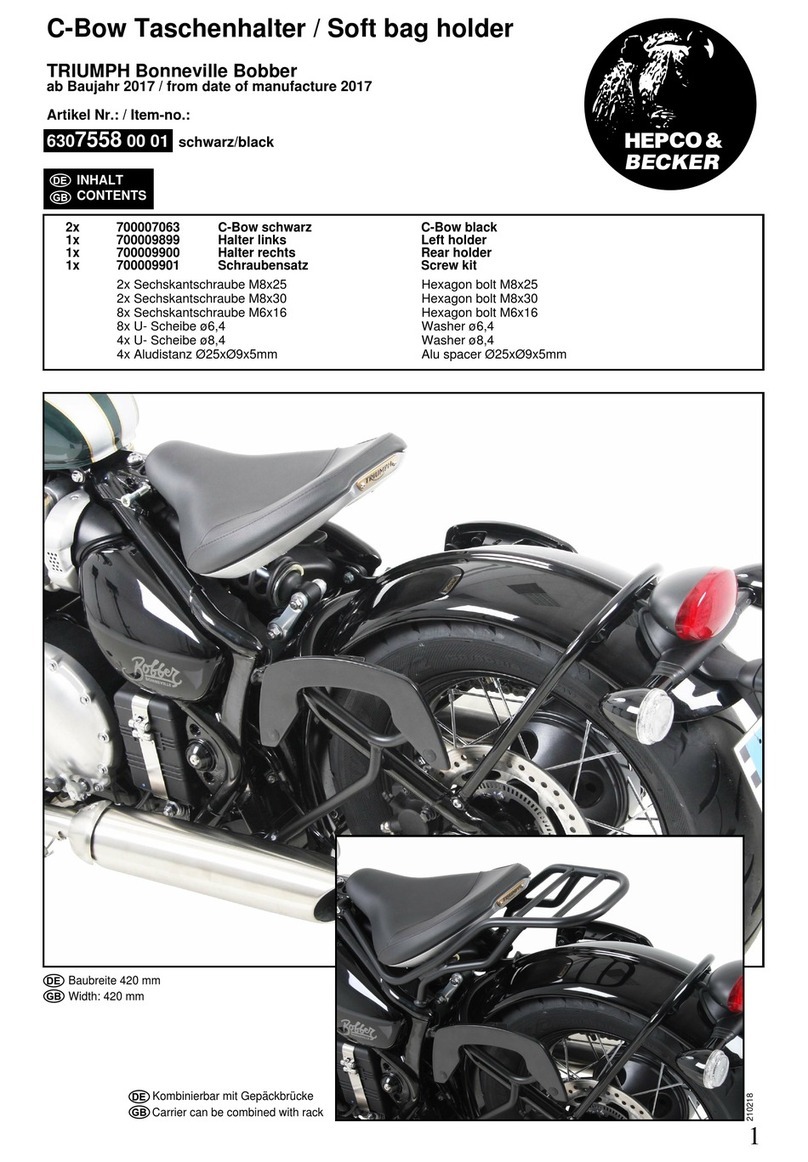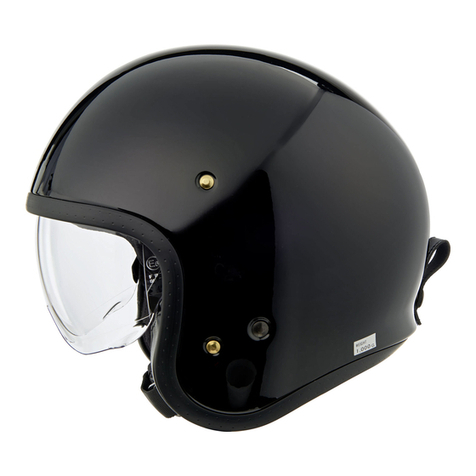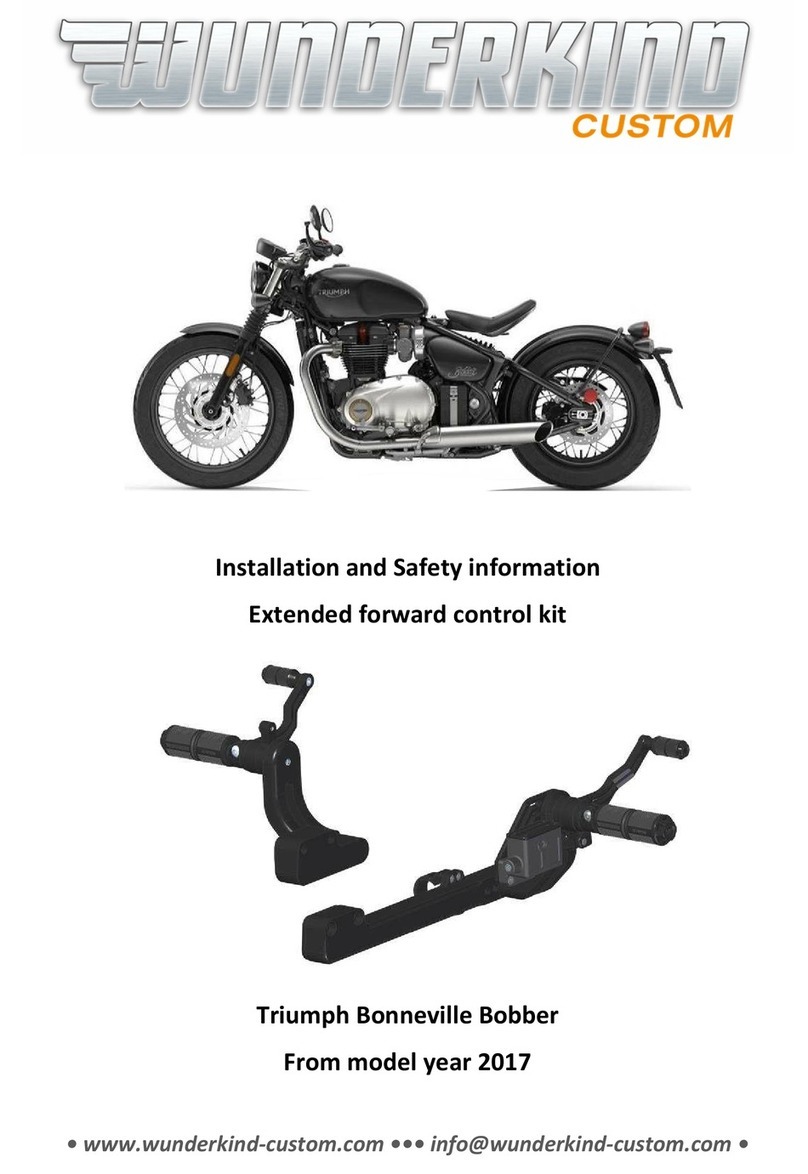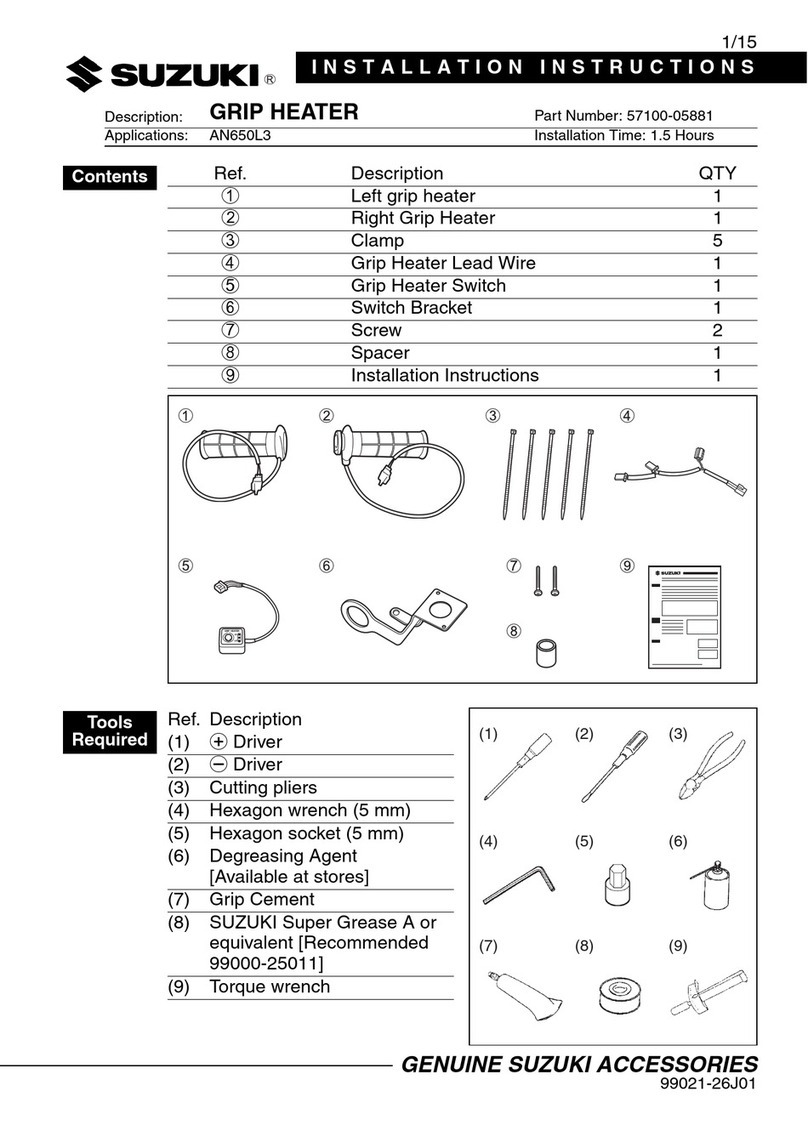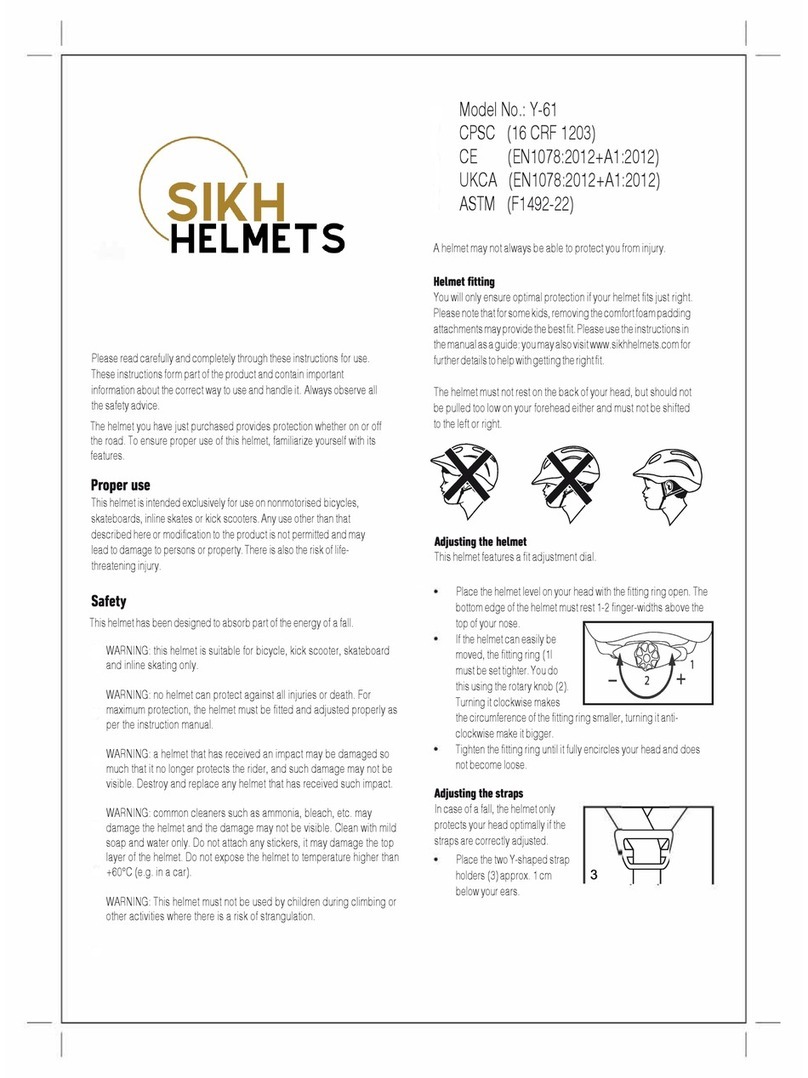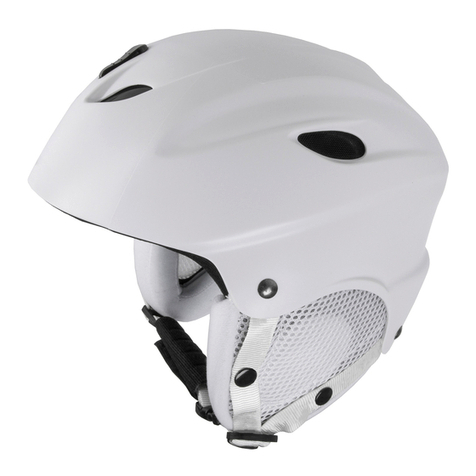
2
ENGLISH
SAFETY AND NORMS OF USE
IMPORTANT
- Before using the helmet read this booklet
and all enclosed documents carefully,
in that they contain very important
indications on how to use the helmet
easily and safely.
- Failure to observe these instructions
may reduce the protection provided by
the helmet and consequently put your
safety at risk.
USING THE HELMET
- The helmet has been specifically designed
for motorcycle and motorbike use therefo-
re it must not be used for other purposes
(or uses or scopes). Equal protection is not
guaranteed for any use different from the
intended one.
- In case of accident, the helmet
represents a protective element, which
reduces injuries and head damage. This
notwithstanding, it cannot alone prevent
serious and/or fatal injuries due to the
specific accident dynamics, therefore drive
carefully.
- When driving any motorcycle, always
wear the helmet properly fastened in order
to fully exploit its protection.
- Never wear scarves under the fastening
system nor caps of any sort under the
helmet.
- The helmet can muffle traffic noises.
However make sure that you can hear
essential sounds such as horns and
emergency vehicle sirens.
- Always keep the helmet away from heat
sources like the exhaust muffler, the bag
seat or the interior of a vehicle.
- Do not modify nor damage the helmet
or part of it for whatsoever reason. Use
only original accessories and/or spare parts
suitable for your specific helmet model.
- Damage resulting from accidental fall
may not be visible; helmets, which received
violent impacts, are to be replaced.
- In case of doubt about the helmet
integrity and safety, avoid using it and
contact an authorized dealer to let it check.
CHOOSING THE HELMET
SIZE
- In order to determine the correct helmet
size, try on helmets of different sizes and
choose the one which suits best the shape
of your head and which you feel firm once
worn and fastened, thus ensuring a great
comfort.
- Should the helmet be too big, it may slide
down covering the eyes or turn slowly to
the side while riding.
- Keep it on for a few minutes and make
sure there are no points of extreme
pressure that may cause pain or headache.
TAKING OFF THE HELMET
- With the helmet on and the strap securely
fastened, try to take the helmet off as
shown in Fig. A. In case of accident the
different forces at stake and their various
directions may result in helmet rotations or
they may even cause the helmet to slip off
if it is not securely fastened.
- The helmet should not rotate nor move
on the head and should not slide off.
Should the contrary happen, adjust strap
length or change helmet size. Repeat test.
RETENTION SYSTEM
- The retention system (strap) is factory-
adjusted at a standard length. Before use,
check that it is correctly pre-adjusted.
- Make sure the strap is properly fastened
and tightened so as to keep the helmet
firmly in place. Anyway, before riding,
make sure that the strap is well fastened
under the chin, as close as possible to the
throat, but without being uncomfortable.
- The correct strap tension should allow
normal breathing and swallowing, but
without leaving the space of a finger
between strap and throat.
Attention: the button which may be
present on the strap only prevents
its end from flapping once the strap has
been fastened properly.
I N S T R U C T I O N S F O R U S E

